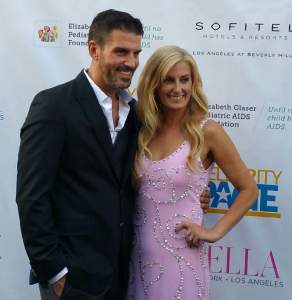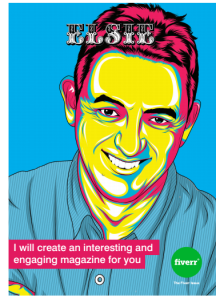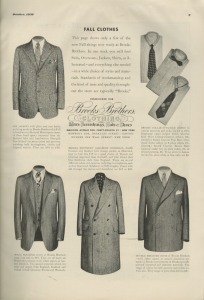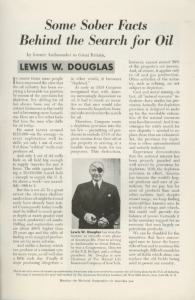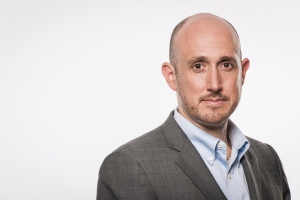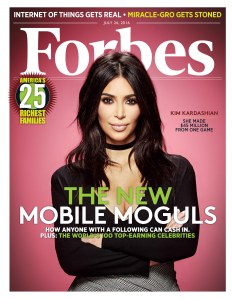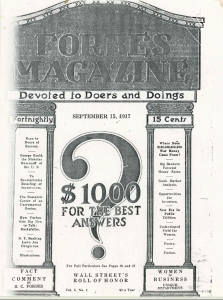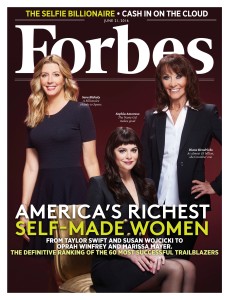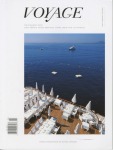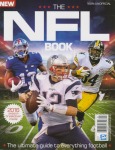“While the Internet shows you what’s out there, it’s not what you always see. There are images that look great on the Internet, but once you see them in person, they’re not that hot. So, I think someone spending $25,000 and up for a painting rarely will buy it sight unseen on the Internet, unless it has provenance that it’s to an artist they have already experienced on some more intimate level in person. 
“Taking that idea and putting it back to the magazine; it’s like when people look at an artwork, they want to have a tactile experience, so picking up a magazine and looking at it, feeling the weight of the magazine in your hand, the thickness of the paper, the high visual quality of what’s on the page; it kind of creates a world that you can get sucked into. It captures your attention and your emotions, and you can experience it by holding it in your hand, take it home with you and read it at your leisure. It’s just a completely, I think, more rewarding experience than looking at an online magazine.” Steve Martin
Art+Design magazine is a New Orleans-based publication that is spreading its local wings and going global. Something its founder and publisher, Steve Martin, said has been the ultimate goal all along. The magazine is taking on the luxury market and adding a healthy dash of creative artistry to the mix by viewing each and every topic from an artistic lens, an interesting concept that certainly spices things up and changes the niche game entirely.
I spoke with Steve recently and we talked about his “worldly” expectations for Art+Design and also touched on the local insert that will soon start plumping the book with even more goodness of content, his new magazine called Canvas, an idea that came to him as he thought about some local advertisers who might get left behind with the new global slant of the parent publication.
Steve is an artist and a patron saint of the art districts of New Orleans and Miami, having galleries in both for quite some time. Today, he concentrates on his own studio in the Crescent City and his magazines that promise to bring art, fashion, photography, interiors and many other luxury topics to the four corners of the world, all covered in the creative style he knows so well, the artists’ eye. He is a man who is open about his deep and abiding faith in God and his sheer sincerity shines through each and every expression of his work that he shares.
So, I hope that you enjoy this very informative and interesting discussion with an artist and a creator of print that is both an entrepreneur and an experienced publisher in his own right, the Mr. Magazine™ interview with Steve Martin, Founder and Publisher, Art+Design magazine.

Steve Martin
But first the sound-bites:
On the history of Art+Design: I started thinking about where people were coming from when it came to my own art and it was the luxury market. And I began to think about luxury lifestyle magazines and how when you look at W Magazine, they have an art editorial in there and it really means something, and there’s Architectural Digest that has an art essay in it, and it really just stands out. I came up with the idea of creating a magazine that encompassed art, design and the experience of that luxury lifestyle and that’s where Art+Design came from.
On why he felt that a print magazine was the best platform for Art+Design: It’s like when people look at an artwork, they want to have a tactile experience, so picking up a magazine and looking at it, feeling the weight of the magazine in your hand, the thickness of the paper, the high visual quality of what’s on the page; it kind of creates a world that you can get sucked into. It captures your attention and your emotions, and you can experience it by holding it in your hand, take it home with you and read it at your leisure. It’s just a completely, I think, more rewarding experience than looking at an online magazine.
On why he decided to go global with the magazine: New Orleans has definitely injected into the world a great number of very influential people: writers, artists and musicians. It’s the birthplace of jazz and there’s quite a bit of culture that has permeated the world from New Orleans. I was thought that New Orleans was on the same level as New York and Paris in its cultural impact. And I really thought it should be elevated and there was nothing in New Orleans that elevated New Orleans or made anyone think of anything that they weren’t already thinking, which was that we were provincial. So, when I started this thing out I wanted it to be an international magazine. It was never meant to just stay local. My long-term vision was to launch it into the international public eye as quickly as possible.
On why he thinks it took so long for someone like himself to come along and realize that the city of New Orleans was deserving of a global magazine that documented the luxury lifestyle in an artistic way: It’s a little bit of that provincial nature that everyone saw from outside New Orleans. They weren’t off; it is provincial in a way. It’s a hip little city and a tight community. It’s done a certain way.
On whether he believes that as long as there is art, there will be print: Yes. I think that the demise of print magazines is premature. I don’t think that the Internet can give the experience that a magazine does. Now, will it kill off the weaker magazines; yes, it’s already done that. You’ve seen the decline in the print market and that’s due to the weaning process that’s heightened by the Internet. I don’t think that you get a chance to hang around if you’re not staying alive by figuring out how to stay alive. You have to be proactive in it. You can’t just create it, then let it coast.
On how he is being proactive with Art+Design: We’re assignment driven, so we get submissions all of the time, but that’s never really worked out for us, so it’s really just keeping our eyes opened and looking at world trends. One of the things that I try to do, and is an interesting direction, I think, is that because New Orleans is that international city; we look for stories that are in the world and either have some thread back to New Orleans, and that can be really thin, or from a story that’s already here and has some effect out in the world.
On the biggest stumbling block he’s had to face and how he overcame it: I guess it was the money because I started with none. I didn’t have a backer; it’s self-sustaining, I guess. The way that I created it was I took a notepad and I laid out 80 pages, hand-drawn in the notepad, and then I went into Vanity Fair, Vogue and Architectural Digest and Art News and tore pages out of those magazines and then created an 80-page, stapled together copy of those stripped out pages and I walked around the city and I showed people my notebook of what I wanted to design and what I wanted the layout of the magazine to be and the concept behind it, and then I showed them the ads and the stories that were in the stripped out pages that I had, and I said this is what I’m shooting for, for my magazine to be of this caliber and quality and this level of publication.
And I basically sold enough ads from that to start it, so the difficulty has been every issue for the first four years now has been hand-to-mouth.
On what kind of art he creates: My website is stevemartinfineart.com and I paint, sculpt and draw. I make prints. I’m self-taught, so I haven’t run into anything that I haven’t tried. (Laughs) I’m always experimenting. Again, I came from a little town and I have always been an artist. I won a competition when I was five years old and I got to go on television for an art piece that I did. And that’s when I decided that I wanted to be an artist. I got all that attention and some candy. And I’ve stayed with it.
On anything else he’d like to add: Art+Design is meant to be the global magazine, I want it to be on par with Vanity Fair, Town & Country, Architectural Digest; all of those magazines. That’s been the goal, to be in that peer group. Now that I have launched into that arena and we’re striving to get there, the local market at some point may get left behind, not in content all the way, but the ability for some of the local advertisers to hang. So, I came up with the idea of Canvas, our new magazine, and the name came from the art side; a blank canvas full of infinite possibilities. And then the other side of the coin is when you move into a new area you canvas the area to see what’s cool and what’s going on. So I took that as the catalyst for Canvas and decided that could be the growth vehicle, a certain level where the main focus would be Art+Design, but we could create an attachable magazine called Canvas Chicago; Canvas New Orleans; Canvas Atlanta; Canvas Miami, and then grow it from there.
On what someone would find him doing if they showed up unexpectedly at his home one evening: Sleeping, because I don’t stop. A few years ago, I sort of started over in my life, and I started the magazine at that same time. And I had a painting studio uptown New Orleans that’s literally a 10×10 room and I moved into that and basically took everything that I could make or create and I would put it into the magazine. So, I still live in that 10×10 room; I don’t need anything else because I just come here and sleep. I’m typically always working. If you want to catch me in the afternoon; I’ll probably be at work and we could have dinner, but when I go home, it’s just to fall into bed exhausted.
On what keeps him up at night: Nothing; I’ve come to a place in my life where, and I think it was in the last publisher’s letter before this, you can see some of the stuff I write a lot about, my experiences. One of the things that I used to do was come up with an idea; work like hell to make it come to pass, and then worry it to death. I’d worry about it all of the time. I have since learned through my faith to change my attitude from worrying about everything to having faith that things will work out. So, I haven’t changed my work ethic, I still come up with a zillion ideas and I still tenaciously work hard at it, but rather than worrying about it all of the time, now I have faith that it will either be or not be and I’m leaving that up to God to decide and then I just keep moving forward.
And now the lightly edited transcript of the Mr. Magazine™ interview with Steve Martin, founder and publisher, Art+Design magazine.
Samir Husni: Congratulations on the national launch of Art+Design. I picked up the magazine recently and loved it.
Steve Martin: Thank you. We’ve been working on it quite a while. We actually, through Curtis Circulation, went global with this issue, so we’re shipping magazines from Iceland, throughout Europe and down into Singapore, Australia and New Zealand, and then Panama, with more countries coming.
Samir Husni: Tell me the story of Art+Design.
Steve Martin: I’m an artist and I have a gallery on Julia Street in New Orleans and have had one there since the 1990s. It has always been a challenge as an artist and a gallery owner to build a sustainable branding campaign through advertising. The cash flow was always so uneven. And it made it difficult to assign contracts to get breaks for advertising in the magazine that we thought would bring buyers to the door.
So, I had always been interested in magazines since I was a kid. I grew up in a little rural town near Alexandria, Louisiana called Tioga. I’d joke around and say the only art they had in the whole town was the calendar that was at the gas station. It was very rural. But somehow in that rural setting I would get my hands on interior design magazines and I was amazed at all of the architecture and interiors that I saw in them. So I started looking at magazines and magazine design, and that was back in the 60s and 70s.
I moved to New Orleans in 1987 and was “discovered” by a gallery owner and I began having one-man shows, building my art career up from there. In the process of my art career, I became the president of the arts district here in New Orleans. And I did that up until Katrina hit. And when I moved to Miami to keep my New Orleans gallery going, I opened up two places and for three years I flew back and forth each month, from New Orleans to Miami. While in Miami, I created an arts district down there called “Miami Art Design and Entertainment District,” which was in what’s now the Design District, and later became Wynwood.
In the process of creating that district, I was trying to figure out a way to advertise the district and what we’d done in New Orleans was to create a walking brochure that basically had a little blurb about each gallery and a map and directory. So, I posed that to the people who became members of that organization down there and we had something that we’d never had in New Orleans, which was money to operate on. We had 110 members and they all put about $2,500, so we had $250,000 of operating cash for the 501(c) (3) to promote ourselves.
The young man that I was working with to create the walking brochure; we sat down and we started thinking about it and he said that this was kind of an opportunity to create something like an airline magazine for our neighborhood, where it’s only shown around in the district and it only writes about the people, the members, who are in the district and it would contain the brochure, but it would have editorial about the galleries and the shops, content that we can basically control. Then all of those people could place their ads around it.
So, we created something called the “Miami Design District Guide.” And it’s still going. The young man that runs it is John White. And he was the publisher; I was just helping with sales and getting the members to come on board.
Then when New Orleans got on its feet and I moved back from Miami, I brought that idea back here and I created a little magazine called “Art New Orleans.” And it was just for the New Orleans arts district. The editorials were about the galleries and artists in the district and advertisers were the art galleries around it. It was very myopic in its vision and it was only about art, therefore subject to the cash flow problems that galleries and artists generally always struggle with. So, it was never really viable; it couldn’t grow. It was a 32-page, saddle stitched magazine and it was promotional in nature. We only wrote about the people who advertised in there, or the district. And it stayed around for seven years; it was just kind of there. But it gave me an opportunity to learn a whole lot about the nature of publishing and what people are looking for and how to work within the industry.
When John White decided that after seven years of not making any money, actually losing money, that he didn’t want to be a part of the New Orleans one anymore, I offered to buy him out and he said no, let’s just let it kind of go away, and I told him that I was going to start another magazine and he said OK, and he went his way and I went mine and it was all on good terms.
I sat for a year thinking about how I wanted to move forward. And what I determined was magazines, basically being myopic in their vision, really got attention from the academic crowd, from other gallery owners and from other artists and teachers. And those were people interested in art and interested in seeing themselves in print and interested in what was going on in the art world. But it didn’t really bring a lot of art buyers in. And that’s what sustains the business.
So, I started thinking about where people were coming from when it came to my own art and it was the luxury market. And I began to think about luxury lifestyle magazines and how when you look at W Magazine, they have an art editorial in there and it really means something, and there’s Architectural Digest that has an art essay in it and it really just stands out.
I came up with the idea of creating a magazine that encompassed art, design and the experience of that luxury lifestyle and that’s where Art+Design came from. It’s a simple name, and because it’s so simple, I guess that’s why it was still there. I started looking for magazine names to name the publication and it seemed like everything that I could think of for a name had already been taken and was a magazine somewhere in the world. Finally it just came down to Art+Design, which is what it is, and that wasn’t taken and it worked, and it said what we were going to do.
So, the whole concept behind the magazine’s vision looked at every aspect of the luxury lifestyle through an artistic lens, and used that as the catalyst to write about whatever we wrote about, so it could be fashion or whatever; it’s an artistic view about fashion. Or if it’s an interior design, it’s an artist’s residence or an artistic view of the residence, because it’s different or it has a great art collection. And I thought that was something that may show up in other magazines, but it isn’t really focused on in other magazines. And that was the catalyst for the nature of what we were going to put out.
Samir Husni: Why did you feel that a printed magazine was the best platform for you to promote the art district and that luxury lifestyle?
Steve Martin: Having experience with art, I know the Internet is a great research engine and it allows you to get out and look around to determine where things are that you might like or what you might like, but it’s not a great vehicle for selling art. You don’t know what you get until you have bought it and received it by mail basically. When you buy a painting, I think it’s a lot more of a tactile experience. You want to walk up to it and look at it; you want to touch it and have that intimate experience of being next to it when you’re thinking about bringing it home and putting it on your wall.
And while the Internet shows you what’s out there, it’s not what you always see. There are images that look great on the Internet, but once you see them in person, they’re not that hot. So, I think someone spending $25,000 and up for a painting rarely will buy it sight unseen on the Internet, unless it has provenance that it’s to an artist they have already experienced on some more intimate level in person.
Taking that idea and putting it back to the magazine; it’s like when people look at an artwork, they want to have a tactile experience, so picking up a magazine and looking at it, feeling the weight of the magazine in your hand, the thickness of the paper, the high visual quality of what’s on the page; it kind of creates a world that you can get sucked into. It captures your attention and your emotions, and you can experience it by holding it in your hand, take it home with you and read it at your leisure. It’s just a completely, I think, more rewarding experience than looking at an online magazine.
Samir Husni: And why did you make the decision to have a magazine that is still based in New Orleans, but now also global?
Steve Martin: I’ve always thought of New Orleans as an international city. And I experienced a little bit of frustration in Miami because it was another international city and I thought the closeness in the culture would make it a really easy transition. I really enjoyed Miami but the perception that people from different parts of the world have of New Orleans is quite different than what people in New Orleans think. We had Katrina going on at that time, and then there was the mayor of New Orleans who was always in the news with something he had done, and most of what people thought of about New Orleans was that it was a great place to visit, very historic, a lot of fun because of Bourbon Street and the French Quarter, but other than that people thought of it as being very provincial.
And being from Louisiana and New Orleans; New Orleans has definitely injected into the world a great number of very influential people: writers, artists and musicians. It’s the birthplace of jazz and there’s quite a bit of culture that has permeated the world from New Orleans. I was thought that New Orleans was on the same level as New York and Paris in its cultural impact. And I really thought it should be elevated and there was nothing in New Orleans that elevated New Orleans or made anyone think of anything that they weren’t already thinking, which was that we were provincial.
So, when I started this thing out I wanted it to be an international magazine. It was never meant to just stay local. My long-term vision was to launch it into the international public eye as quickly as possible.
Samir Husni: In your letter from the publisher you quote Tennessee Williams: the United States has three major cities, New York, Los Angeles and New Orleans. And everywhere else is Cleveland.
Steve Martin: Yes, that was in my publisher’s letter. 
Samir Husni: There are plenty of magazines in New Orleans; why do you think it took so long for someone like yourself to come along and recognize what a cultural hub New Orleans is and that it should be made more global than it already is by documenting that globalization?
Steve Martin: It’s a little bit of that provincial nature that everyone saw from outside New Orleans. They weren’t off; it is provincial in a way. It’s a hip little city and a tight community. It’s done a certain way.
One of the things that I run into a lot is there are some advertisers here that aren’t global, but could be global advertisers. And I’ve approached them with the magazine and they’re not interested in advertising because we’re not a social magazine. All of the other magazines in New Orleans pretty much are social. There are pictures of who’s who, where they work, and the party, who they were with and so on. And that’s the local attitude. I don’t think they thought they could be more than what they were. They’ve been like they have for so long and that’s all that has mattered. New Orleans is somewhat isolated in its business culture; people do a lot of business out of New Orleans in different places, but it’s kind of closely-held here. I guess. And I don’t think they’ve dared to have the vision to see themselves in that arena somehow.
And there was really nothing else out there for them to do, it was kind of just what was available, I guess. I haven’t seen anything like that available to them in the 20 years that I’ve been here, a magazine that would not be just locally oriented.
Samir Husni: As an artist, do you believe that as long as there’s art, there will be print?
Steve Martin: Yes. I think that the demise of print magazines is premature. I don’t think that the Internet can give the experience that a magazine does. Now, will it kill off the weaker magazines; yes, it’s already done that. You’ve seen the decline in the print market and that’s due to the weaning process that’s heightened by the Internet. I don’t think that you get a chance to hang around if you’re not staying alive by figuring out how to stay alive. You have to be proactive in it. You can’t just create it, then let it coast.
Samir Husni: How do you do that? How are you being creative and not just letting it coast? How are you being proactive with Art+Design?
Steve Martin: We’re assignment driven, so we get submissions all of the time, but that’s never really worked out for us, so it’s really just keeping our eyes opened and looking at world trends. One of the things that I try to do, and is an interesting direction, I think, is that because New Orleans is that international city; we look for stories that are in the world and either have some thread back to New Orleans, and that can be really thin, or from a story that’s already here and has some effect out in the world.
We just try and keep our ears to the ground and really look for interesting things to write about because we want our editorial to be strong. It’s not a pay-to-play magazine, so we have a wall of separation between the editorials and the advertising, which is another thing that New Orleans is kind of bad about. It’s like all of the advertising here drives the editorial in most of the magazines. Not all of it, but a lot of it; a good portion of it.
In my experience with Art New Orleans, which was a little art promotional magazine that I did, it was all promotional and one of the comments that we received was, after a while people realized that you were only written about if you paid for it, and so it lost some of its impact. So, we made a decision to, with the creation of this magazine, or I made a decision, to keep that completely separate. You cannot buy an ad and get an article. It has to stand on its own legs. We don’t punish you if you’re an advertiser with a good story, we’ll write about it. But the key is it has to be a good story.
So with that said we look for good interesting stories. We’re not investigative journalism, it’s a lot of feel-good stuff; it’s not pie-in-the-sky stuff, we just like to write entertaining stories with witty and pithy commentary and points-of-view that people will enjoy reading. If you have a strong, visual content with no story behind it, it’s going to be just fluff, so we put in what we think are strong readable stories and then try to amaze everybody with the visual content, which is the art side of it.
Samir Husni: What has been the biggest stumbling block that you’ve had to face and how did you overcome it?
Steve Martin: I guess it was the money because I started with none. I didn’t have a backer; it’s self-sustaining, I guess. The way that I created it was I took a notepad and I laid out 80 pages, hand-drawn in the notepad, and then I went into Vanity Fair, Vogue and Architectural Digest and Art News and tore pages out of those magazines and then created an 80-page, stapled together copy of those stripped out pages and I walked around the city and I showed people my notebook of what I wanted to design and what I wanted the layout of the magazine to be and the concept behind it, and then I showed them the ads and the stories that were in the stripped out pages that I had, and I said this is what I’m shooting for, for my magazine to be of this caliber and quality and this level of publication.
And I basically sold enough ads from that to start it, so the difficulty has been every issue for the first four years now has been hand-to-mouth. There hasn’t been a cash cushion, so that makes things pretty nerve-wracking from time to time. And it’s based on what we sell in ads as to how thick the magazine is going to be and we’ve been blessed by people getting onboard and staying with us.
Samir Husni: You mentioned that you’re an artist, so do you paint or sculpt; what type of art do you create?
Steve Martin: My website is stevemartinfineart.com and I paint, sculpt and draw. I make prints. I’m self-taught, so I haven’t run into anything that I haven’t tried. (Laughs) I’m always experimenting. Again, I came from a little town and I have always been an artist. I won a competition when I was five years old and I got to go on television for an art piece that I did. And that’s when I decided that I wanted to be an artist. I got all that attention and some candy. And I’ve stayed with it.
My father was a contractor, a practical man who taught me business and the values of hard work and determination. A lot of what I’ve done is that I haven’t known any better. I didn’t know that I couldn’t do something, so I just tried it and was determined to make it work.
Samir Husni: Is there anything else you’d like to add?
Steve Martin: Art+Design is meant to be the global magazine, I want it to be on par with Vanity Fair, Town & Country, Architectural Digest; all of those magazines. That’s been the goal, to be in that peer group. Now that I have launched into that arena and we’re striving to get there, the local market at some point may get left behind, not in content all the way, but the ability for some of the local advertisers to hang.
So, I thought about how I wanted to expand this thing, what model I wanted to follow. One of the models that I looked at was modern luxury magazines and they have the different city magazines, such as Houston, C.S., and D.C. They have 26 labels. A certain percentage of each magazine is national content, similar across the board, and then depending on the local sales team’s ability, another percentage is for that city. And I thought that was one growth model, but it seemed cumbersome for what I had to work with here.
So, I came up with the idea of Canvas, our new magazine, and the name came from the art side; a blank canvas full of infinite possibilities. And then the other side of the coin is when you move into a new area you canvas the area to see what’s cool and what’s going on. So I took that as the catalyst for Canvas and decided that could be the growth vehicle, a certain level where the main focus would be Art+Design, but we could create an attachable magazine called Canvas Chicago; Canvas New Orleans; Canvas Atlanta; Canvas Miami, and then grow it from there. 
That was the thinking, how to bring local promotional content into magazine without compromising the integrity of the magazine. And I came up with creating a separate magazine that goes along with it where you could write profiles and you could put in advertorials and do things that were a little bit more local-based. I jokingly say that it’s going to be a cross between Scout Guide and Where Magazine.
Samir Husni: If I showed up unexpectedly to your home one evening after work, what would I find you doing; reading a magazine, reading your iPad, watching television, painting, or something else?
Steve Martin: Sleeping, because I don’t stop. A few years ago, I sort of started over in my life, and I started the magazine at that same time. And I had a painting studio uptown New Orleans that’s literally a 10×10 room and I moved into that and basically took everything that I could make or create and I would put it into the magazine. So, I still live in that 10×10 room; I don’t need anything else because I just come here and sleep. I’m typically always working. If you want to catch me in the afternoon; I’ll probably be at work and we could have dinner, but when I go home, it’s just to fall into bed exhausted.
Samir Husni: My typical last question; what keeps you up at night?
Steve Martin: Nothing; I’ve come to a place in my life where, and I think it was in the last publisher’s letter before this, you can see some of the stuff I write a lot about, my experiences. One of the things that I used to do was come up with an idea; work like hell to make it come to pass, and then worry it to death. I’d worry about it all of the time.
I have since learned through my faith to change my attitude from worrying about everything to having faith that things will work out. So, I haven’t changed my work ethic, I still come up with a zillion ideas and I still tenaciously work hard at it, but rather than worrying about it all of the time, now I have faith that it will either be or not be and I’m leaving that up to God to decide and then I just keep moving forward. If something fails, it’s a learning experience that I can incorporate into the next thing. I’ve had enough successes and failures in life to know that it’s life and mountains and valleys come and you never know where they’re going to be, you just have to have your head on right so that you can get through whatever. If you’re at the top of the mountain, don’t let it give you the big head, and if you’re in the valley, don’t despair.
Samir Husni: Thank you.




